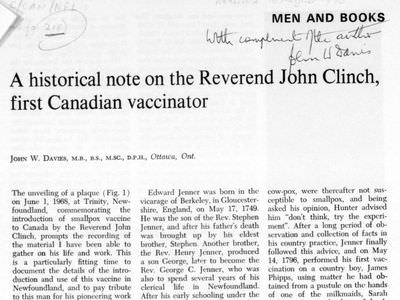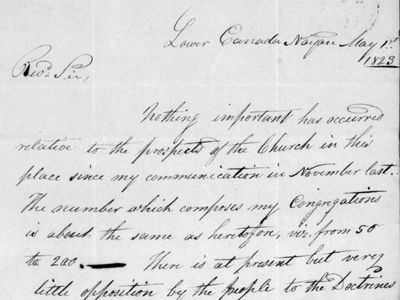Canada in Records from Colonial Missionaries, 1722–1952

Canadian records in the USPG archive, 1722–1952
The records are a treasure trove of local history, particularly social history, including primary and Sunday school education, the American Loyalists, [Maroons], Indians, immigration and emigrationUniversity of New Brunswick
Access the full collection
Access the full archive of Canada in Records from Colonial Missionaries, 1722–1952.
Institutional Free Trial
Start your free trialRegister for a free 30-day trial of Canada in Records from Colonial Missionaries, 1722–1952, for your institution.
Institutional Sales
Visit Sales PagesellFor more information on institutional access, visit our sales page.
Single User License
Purchase a license below to view the full collection.
Already have a license? Sign in.
The Canadian letters of these missionaries describe the country as they saw it

The United Society Partners in Gospel (USPG) is a UK-based Anglican missionary organisation that operates around the world. During the 18th, 19th, and early-20th centuries, the USPG went by the name of the Society for the Propagation of the Gospel in Foreign Parts (SPG). This collection includes letters and supplementary material compiled by its Canadian branch during the period 1722-1952. The documents detail the day-to-day activities of SPG missionaries, including their work in churches, schools, and indigenous communities. The collection provides students and scholars with a unique overview of British colonial and Canadian history.
Contents
Canada in Records from Colonial Missionaries, 1722–1952...
Canadian records in the USPG archive, 1722–1952
Discover
Volumes
Insights
- The C Series records from Newfoundland include an article and some papers upon the minister and friend of Edward Jenner, who introduced the Smallpox vaccine to Canada.
- A map of the principle settlements in Upper Canada provides some clues as to how Canada was first settled. The C Series Records for Upper Canada also seem to include plans to build a Cornwall Canal.
- The narratives in the C Series correspondence for Nova Scotia reveal how uncertain the colonists were about whether to settle in Nova Scotia or not.
- The E Series reports describe missionary life in Canada during World War One. They also include statistics, and photographs taken during peacetime.
Unlock Historical Research for Your Institution
Provide your students and researchers with direct access to unique primary sources.















